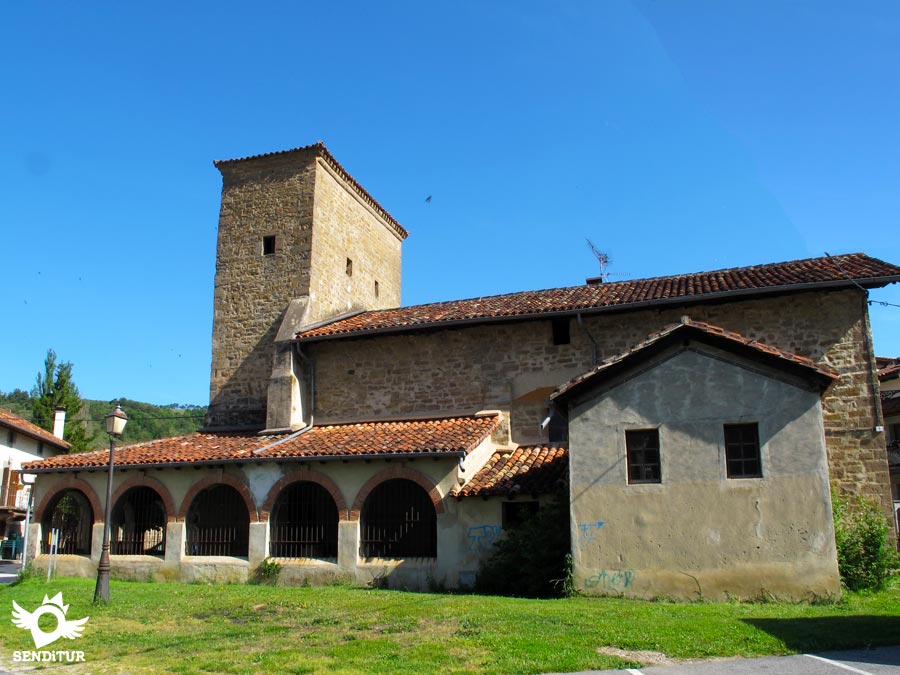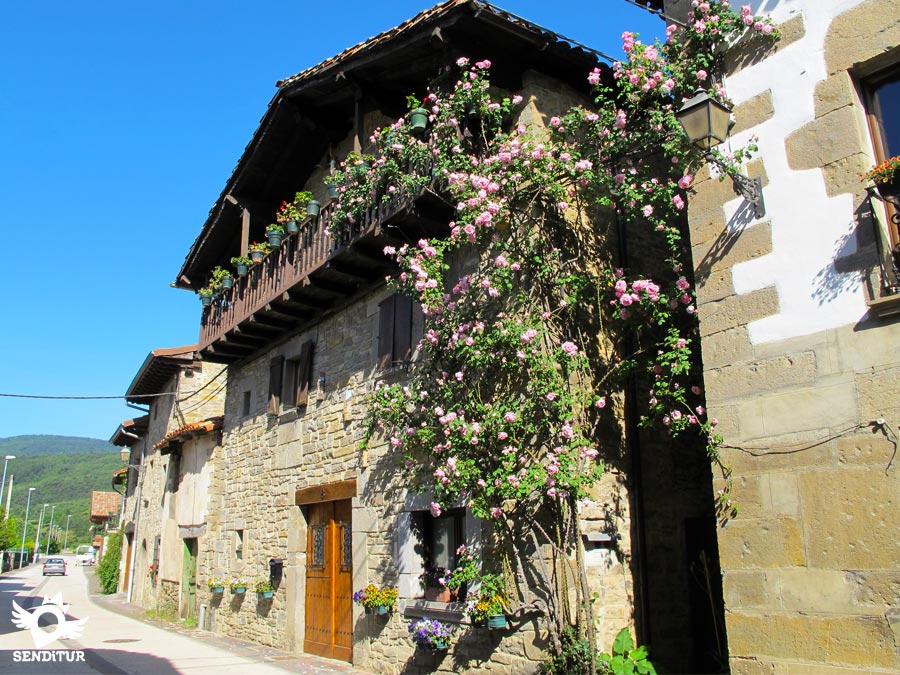It is located at the intermediate point between Bizkarreta-Gerendiain and Pamplona-Iruña. The origin of Larrasoaína-Larrasoaña is attributed to the monastery of San Agustín de Larrasoáin, Larrasoaña, founded apparently in the 10th century and incorporated into the monastery of Leire in the 11th century. In the 12th century, a group of Franks, foreign craftsmen, settled in the place, attracted by the privileges and concessions that the kings gave to the new burghs that were created and to which Sancho VI the Wise granted the charter of Pamplona. The new town of Franks ended up adopting the name of Larrasoaña in the 13th century.

Because it was a meeting point for pilgrims, there were three hospitals in this town. The oldest hospital it was the of monastery of the Augustinian Religious, owned by the collegiate church of Roncesvalles. The brotherhood of Santiago also had its own, and the other was that of San Blas. Larrasoaña was the temporary residence of Doña Urraca, daughter of Sancho el de Peñalén, and the seat of the Courts of Navarre in 1329, which received here the oath of Philip II of Evreux and of Joan II. It was an independent municipality until 1928, when it became part of Esteríbar.
Some houses in the village have a central entrance with a large semicircular arch door, carved eaves and coats of arms, as well as Gothic-style architectural motifs. There is a building dating from the Middle Ages, which is privately owned and used as a private dwelling, which is known as the "Old Hospital" and which depended on the Collegiate Church of Roncesvalles and in addition to hospital was also used as cillería, granary.

Inside the town stands the parish of San Nicolás de Bari, of medieval origin from the thirteenth century, but reformed in the Baroque period. The famous medieval bridge, also known as the "bridge of the bandits", should be mentioned.
Larrasoaína-Larrasoaña celebrates the 8th of September, Nativity of Our Lady.
Typical of this area is the cursed tortilla, whose name comes from the recipe of agotes. It is a rich tortilla of potatoes curdled in butter, not in oil, of soft flavor. It seems that in this village there was a settlement of agotes, they were a village of exiles, blondes, almost redheads, condemned to live isolated from the rest of the medieval society, one of the races considered as cursed together with Moors, Jews and gypsies and that they were denied the property of the land, the quality of hijosdalgo and the right to mix with the other citizens not even in the church, where they had holy water for their exclusive use.

Legend has it that a band of thieves disguised as pilgrims robbed the walkers as they passed by the medieval bridge and for this reason it is named " of the bandits".
Larrasoaína-Larrasoaña is crossed by the N-135 national road that links Pamplona-Iruña with Roncesvalles-Orreaga and Aóiz.
There is a bus service from Monday to Saturday that covers the Pamplona/Iruña-Roncesvalles/Orreaga line.
SENDITUR is not responsible for any variation in the information described, as well as for the misuse of its guides and recommends that everyone be responsible and prudent in carrying out the activity. Likewise, we invite you to document yourself with books and specialized guides to complement the information described. From the commitment of SENDITUR with Nature and the respect to the balance of the environment, SENDITUR urges you to travel in a responsible way, with low environmental impact and respecting at all times the Natural, Cultural and Social environment wherever you go. For any suggestion, SENDITUR invites you to send an email to .
Continue watching …